The Best Places to See the Northern Lights: Ultimate Guide for Witnessing Aurora Borealis
If you’ve ever dreamed of gazing up at the night sky and being completely awestruck by the mysteries it holds, then witnessing the Northern Lights should be at the top of your bucket list. This experience is on many a person’s must-see list, as the lights themselves will take your breath away and leave you truly mystified. This phenomenon is not just incredible; it’s otherworldly, and it’s undoubtedly one of the most remarkable sights you could ever hope to see in your lifetime. It’s an adventure well worth the effort to get there. Plain and simple—if you want to lose yourself in something truly indescribable until you see it for yourself, the Northern Lights are for you. Read on as we explore the best places to visit if the Northern Lights are calling your name.
Where Are the Northern Lights Located?
The Northern Lights, also known as aurora borealis, are a natural phenomenon visible in various parts of the Northern Hemisphere. They’re particularly stunning in locations within the aurora zone, which includes countries like Norway, Sweden, Finland, Iceland, Canada, and Alaska. These are some of the best locations to see the Northern Lights, with dark skies and minimal light pollution providing optimal conditions.
To add a bit of fascinating history to set the scene. Back in 1619, Galileo named this mesmerizing phenomenon “aurora borealis,” drawing from Aurora, the Roman goddess of dawn, and Boreas, the Greek god of the North wind. It’s a name as beautiful and mysterious as the lights themselves.
The Sami people of the northern regions have their own beliefs, seeing these lights as the souls of their ancestors. They maintain a respectful silence in the presence of the aurora, fearing that the lights might float down and carry them away to the afterlife. Learn more about Sami culture and their connection to the Northern Lights. In Finland, the lights are called “revontulet,” or “fox fires,” stemming from a legend about an Arctic fox dashing through the snow, sending sparks into the sky. These lights seem to belong to another realm entirely, making them appear otherworldly, almost like something out of a dream. Learn more about the science behind the Northern Lights to understand the fascinating natural processes that create this stunning phenomenon.
Best Places to See Northern Lights in Different Regions
The beauty of the aurora lies in its dazzling unpredictability. These lights appear due to solar flares bursting from the sun’s surface and solar winds. However, viewing them requires clear, dark skies free of light pollution within the actual aurora zone. This zone stretches across the Arctic regions of Norway, Sweden, Finland, Iceland, Southern Greenland, Alaska, and Northern Canada. Although sightings can’t be guaranteed, the chances of witnessing the aurora between September and April in these regions are exceptionally high, making this the most popular time for those in search of them.
Best Places to See Northern Lights in Alaska
Alaska is a prime location for witnessing the Northern Lights, especially in Fairbanks. Fairbanks isn’t just a city; it’s a front-row seat to one of nature’s greatest shows. Positioned under the aurora oval with its clear, dark skies, Fairbanks is one of the best places in the USA to see the Northern Lights. Here, the lights often come out to play, and when they do, it’s pure magic. Explore more about Fairbanks and its Northern Lights experiences.
Best Places to See Northern Lights in Iceland
Iceland is not just about geysers and glaciers—it’s also a top destination for Northern Lights chasers. While many visitors opt to stay in Reykjavik, with its bustling international airport and countless Northern Lights tours, Akureyri offers a remarkable alternative. This northern city is like Iceland’s hidden gem for aurora seekers. It boasts clearer skies, less light pollution, and access to absolutely stunning national parks. Though more popular in the summer, Akureyri transforms in winter, with snow-covered volcanic peaks surrounding the town. It’s a magical setting where you can take in the lights while enjoying a stay in a luxurious hotel or resort. Explore more about traveling in Iceland and discover why it’s a top destination for seeing the Northern Lights.
Best Places to See Northern Lights in Canada
Canada provides some of the most breathtaking Northern Lights experiences, especially in the Yukon and Yellowknife. These areas are known as some of the best places to see Northern Lights in Canada, offering clear skies and a long viewing season. Imagine standing under a canopy of stars, in the vast wilderness, as the sky suddenly erupts in colors—it’s a sight that’s worth every chilly moment. Check out real-time aurora forecasts to plan your visit.
Best Places to See Northern Lights in Sweden
In Jukkasjärvi, Sweden, visitors can stay at the famous Ice Hotel while enjoying some of the best Northern Lights displays. It’s one of the best places to see the Northern Lights in Sweden. The Ice Hotel is not just a place to stay—it’s an experience, with each room uniquely crafted from ice and snow every year. Discover more about visiting the Icehotel in Jukkasjärvi, where the Northern Lights add to the magic of this extraordinary accommodation.
When Is the Best Time to See Northern Lights?
Timing is everything when it comes to spotting the Northern Lights. The best time to view the Northern Lights is typically from September to April when the nights are longest and the skies are clearest. It’s during these months that the auroras are most active, and the chances of a clear, colorful display are highest.
Best Time of Year to See Northern Lights
Mark your calendars for the months between September and April. During these months, the nights are longer, and the skies are clearer, increasing your chances of seeing the aurora. These months offer the perfect combination of factors needed for an unforgettable Northern Lights experience.
Best Time to See Northern Lights Tonight
For the spontaneous adventurers out there, if you’re planning to see the Northern Lights tonight, check local aurora forecasts for clear skies and high solar activity to increase your chances of a successful sighting. It’s all about being in the right place at the right time—and a bit of luck never hurts!
Best Places to Experience the Northern Lights
Now that we’ve covered the when and where, let’s delve into the top places to witness this awe-inspiring beauty.
1. Rovaniemi, Finland: A Winter Wonderland

Rovaniemi in Finnish Lapland is not just about Santa Claus—it’s also a gateway to the Arctic and a perfect place to see the Northern Lights. Located right on the Arctic Circle and with its own airport, this city radiates festive charm year-round as the heart of Santa’s world, boasting the dazzling Santa Claus Village and Santa Park. Winter activities are always on the go, from sledding with real huskies and snowshoeing to ice fishing and reindeer rides—this is an experience for the whole family! Learn more about visiting Lapland and Rovaniemi to plan the perfect trip to this winter wonderland.
Interested in the lights? Embark on a snowmobile safari to venture deep into the dark-sky wilderness, or slip into a rubber survival suit and go ice floating, illuminated by the glow of the aurora itself.
Where to stay: Lose yourself in the gorgeous surroundings with a stay at the Arctic TreeHouse Hotel. These stilted treehouse suites feature floor-to-ceiling glass windows and sleek Nordic interiors in cool, wintry tones, offering a truly immersive experience.
2. Akureyri, Iceland: Iconic Northern Lights Viewing
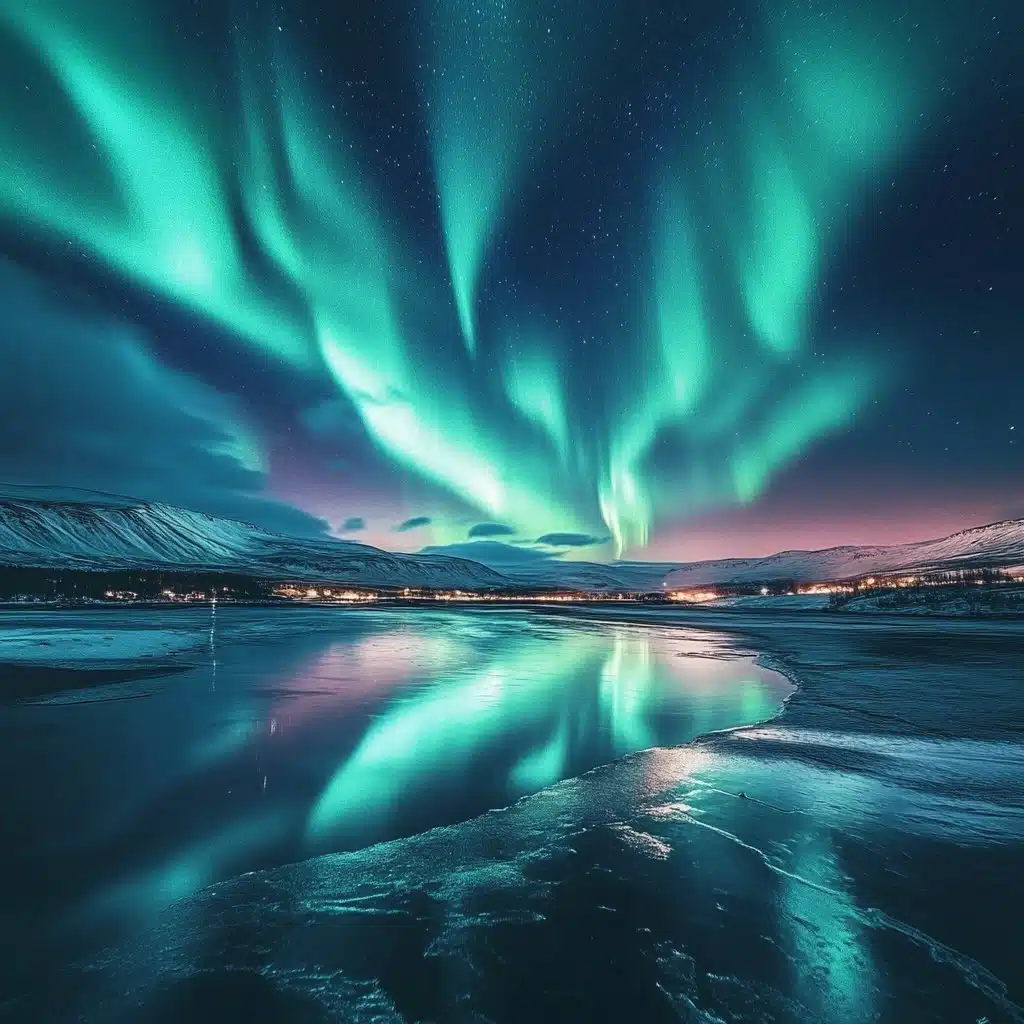
While Reykjavik often steals the spotlight, in the northern reaches of Iceland lies Akureyri—a quieter, less crowded spot perfect for those seeking the aurora. Here, the sky seems to light up just for you, offering a more intimate Northern Lights experience.
Where to stay: Hotel Akureyri stands out with its characteristic Icelandic design, geothermal pool, and aurora-themed restaurant, which has been raved about by various visitors from around the world.
3. Spitsbergen, Svalbard: Remote Wilderness and Aurora

The Svalbard archipelago, located just 800 miles from the North Pole, is a remote wilderness where polar bears outnumber people! It’s a place that feels like the edge of the world, and that’s what makes it so special. Visiting Spitsbergen, the highest populated island, offers a true sense of adventure. The island’s harsh yet stunningly beautiful landscapes make it an exhilarating destination, even with its freezing climate. The polar night here lasts from mid-November to mid-January, when the sun never fully rises—perfect for aurora viewing.
You can catch a glimpse of the Northern Lights near Longyearbyen while on a snowmobile tour, but for a truly immersive experience, a multi-day expedition deep into the pristine wilderness is perfect. This allows you to escape light pollution and increases your chances of seeing wildlife such as the Svalbard reindeer, Arctic foxes, walruses, and possibly even a polar bear or two if you’re lucky.
Where to stay: A beautiful, rustic little spot, “Basecamp Explorer” in Longyearbyen offers cozy, wood-accented accommodations with a modern lodge design. This gorgeous place provides excellent packages, including four-day Northern Lights adventures and three-day snowmobiling expeditions for those wanting to catch a taste of adventure while enjoying the stunning surrounds.
4. Saariselkä, Finland: Finnish Lapland’s Hidden Gem

Tucked away in the remote, elevated region of Finnish Lapland, Saariselkä is the place to be if you’re a Northern Lights enthusiast. Easily accessible via the Ivalo International Airport, this quaint village also serves as a gateway to the outdoor adventures of northern Lapland, including skiing, walking, and dog sledding. The surrounding mountainous terrain offers breathtaking skies, and the stunning Inari Lake, frozen in winter, stretches out to the north.
Where to stay: For a truly unique experience, stay at the secluded Kakslauttanen Arctic Resort, located a stone’s throw from the town. Here, you can drift off in a glass or snow igloo while the aurora dances above you—an experience that’s well and truly magical beyond words.
5. Outer Hebrides, Scotland: Northern Lights Closer to Home

You might think you need to travel far beyond Scotland to see the Northern Lights, but think again. With a bit of luck and good timing, you can witness spellbinding displays in the Outer Hebrides, a chain of islands scattered like stepping stones across the mid-Atlantic.
Spotting the lights here often involves some serious luck. Simply step outside your seaside cottage on a dark, clear night, and you might just come face to face with the wondrous beauty that is the Northern Lights.
Where to stay: The Outer Hebrides offer a serene, quiet resort to stay. Self-catering cottages are ideal, such as the eco-friendly cottages found at Blue Reef, which sit peacefully above the staggering frost-white sands of Scarista on Harris.
6. Jukkasjärvi, Sweden: Iconic Ice Hotel and Aurora Viewing
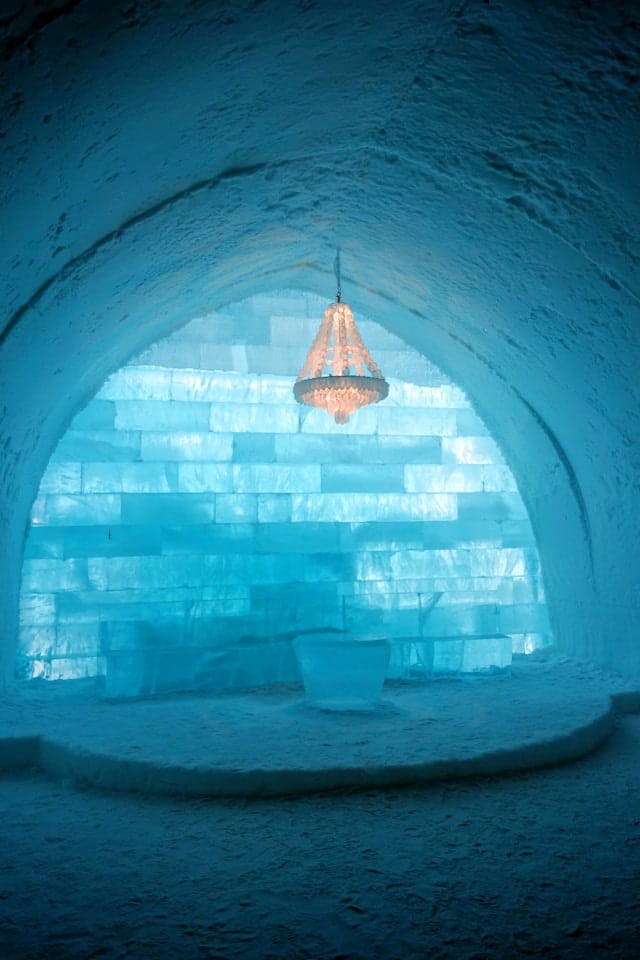
Jukkasjärvi immerses you in the wilderness of the Swedish Lapland. Situated along the frozen Torne River, this enchanting spot is perfect for experiencing the Northern Lights against the backdrop of crystal-clear night skies. The best time to see the Northern Lights here is from September to March, so make sure to book in advance, as it can become very busy during this time.
Where to stay: Experience the magic of the Narnia-like Ice Hotel, the world’s first and largest ice hotel, which is recreated each year using ice from the river—how amazing is this!? (A year-round version is also available). This serves as your base for Northern Lights excursions, snowmobiling, dog sledding, reindeer sleigh rides, wilderness dinners, moose safaris (yes, for real!), and much more.
7. Fairbanks, Alaska, USA: Northern Lights Capital of the USA
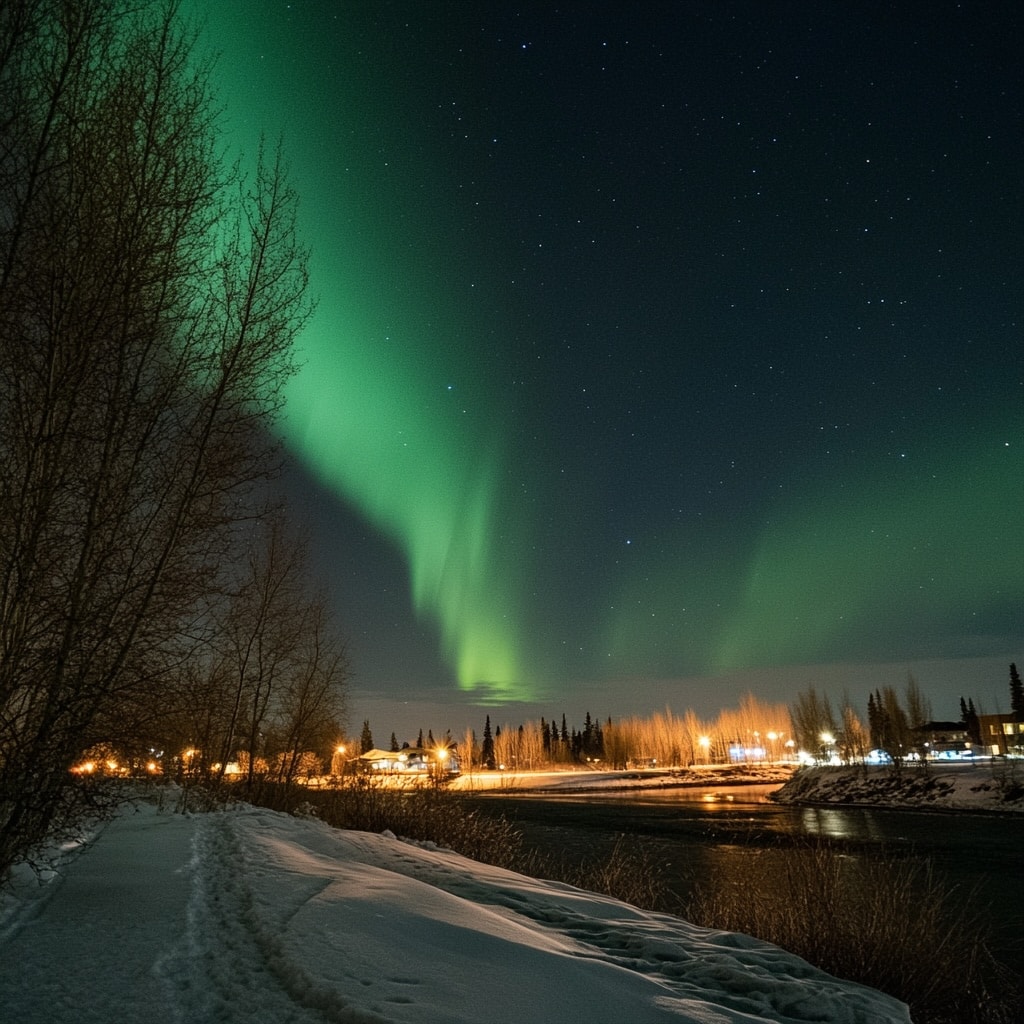
Fairbanks, a small city located south of the Arctic Circle, is Alaska’s top destination for Northern Lights viewing.Sharing a similar latitude with Iceland, this region is a prime spot for seeing the lights, with a long lights season stretching from late August to late April. Fairbanks offers some of the best chances to witness the Northern Lights, thanks to its dark skies, dry conditions, minimal light pollution, and its location. As the only major settlement for miles, Fairbanks boasts an international airport, a variety of accommodations, and some stunning dining spots. Make sure to arrange a nighttime tour to catch the lights at their finest.
Where to stay: Just outside of the town itself, the Borealis Basecamp offers luxurious igloos that are ideal for skygazing. How authentic can you get! True to its name, this basecamp provides a range of activities, including dog sledding, snowmobiling, and photography adventures.
8. Gjógv, Eysturoy, Faroe Islands: A Hidden Gem for Aurora Hunters

The Faroe Islands may not be the first place you think of when it comes to Northern Lights viewing, but they should be. Far enough north for impressive light sightings, they remain a hidden gem, often overlooked on Northern Lights travel lists. One of the best spots to witness the Northern Lights is the remote village of Gjógv. Surrounded by the sea, rugged mountains, and a natural harbor, Gjógv offers a dramatic backdrop for the Northern Lights experience.
Reaching this location requires some effort, with weekly flights from Edinburgh to Vágar via Atlantic Airways, and we do suggest that you hire your own transport, but it is hands down totally worth it.
Where to stay: Overlooking the sea, the Gjáargarður guesthouse provides a simple yet comfortable base with impeccable eco-friendly credentials. This is an idyllic little spot that will definitely be enjoyed!
9. Yukon, Canada: Wilderness and Northern Lights
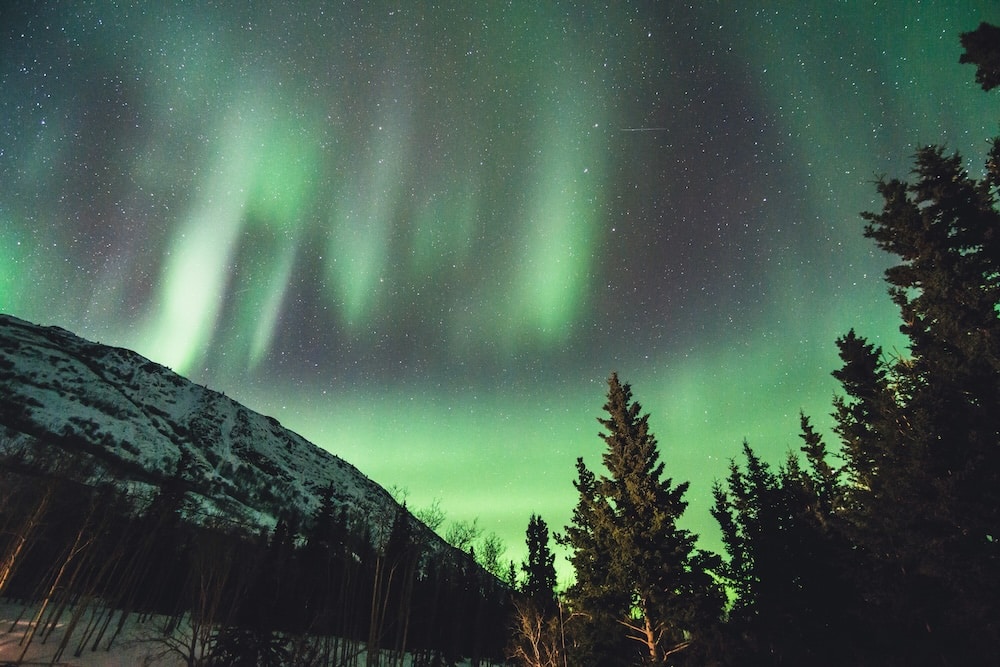
In Canada’s far northwest, the wild and mountainous Yukon offers a breathtakingly remote landscape. Showcasing the country’s most extreme and stunning scenery, this is a land where bears roam freely, and in winter, the Northern Lights dance across the night sky while they leave you in complete and utter awe. The viewing season here is remarkably long, running from mid-August to mid-April. Given the great expanse of the region, joining a guided tour, such as those offered by Northern Tales, can enhance your chances of witnessing the lights without any light pollution.
For those with an adventurous spirit and extra time, Kluane National Park and Reserve is a must. Home to Canada’s highest peak, the 5,959-meter-high Mount Logan, the park is a prime spot for viewing and hosts a Dark Sky Festival in September, which is an experience of note!
Where to stay: For an intimate experience near the capital, Whitehorse, consider the glass chalets at the Northern Lights Resort & Spa. This family-run retreat is perfection for Northern Lights enthusiasts, offering an outdoor hot tub and sauna for a relaxing touch under the sky.
10. Levi, Finland: Ski Resort with Northern Lights

Levi, Finland’s largest ski resort, is more than just a winter sports destination. Located at 67.8 degrees north, Levi maintains a low-key, rustic charm without the crowds. Nestled in the heart of the aurora zone, the Northern Lights often illuminate the winter skies here, providing a perfect end to a day of downhill, cross-country, or telemark skiing in some of the finest powder imaginable.
There are plenty of ways to experience the lights in Levi: by snowmobile, husky or reindeer sleigh, snowshoeing through the forest, or even with a professional photographer who can help you capture that perfect shot. The Northern Lights Village specializes in making these experiences memorable for each and every visitor.
Where to stay: Stay in the glass-roofed cabins at the Northern Lights Village, which boast Nordic traditional décor, truly immersing you in Finnish history, with crackling fires and views of the snow-covered forest. Cozy up in bed, turn off the lights, and watch the lights dance above you.
11. Ilulissat, Greenland: Remote Aurora Viewing

Greenland is a seldom-visited destination, but it offers some of the best Northern Lights viewing with minimal crowds. As the world’s least populated country, Greenland boasts incredibly low light pollution and an outstandingly clear night sky.
The quaint, glacier-covered town of Ilulissat, located around 69 degrees north, is somewhat remote. While there are few direct international flights, it’s easy to connect via Kangerlussuaq, which has more flight options. Despite its small size, with a population of under 5,000, Ilulissat offers a range of small hotels, guesthouses, and apartments, along with excellent opportunities for natural sightseeing.
Where to stay: Hotel Arctic, touted as the world’s northernmost four-star hotel, is located right on the shores of Ilulissat Icefjord. The hotel’s modern aluminum-frame igloos, best suited for couples, offer stunning views of Disko Bay and the majestic icebergs drifting by.
12. Abisko, Sweden: Sweden’s Aurora Hotspot

Abisko is renowned for its exceptional Northern Lights displays, and with good reason. Situated on the edge of Abisko National Park in northwest Sweden, this town enjoys a prime location right in the aurora oval. Staying for three nights here gives you an 88 percent chance of seeing the aurora, provided the skies are clear—a likelihood enhanced by the surrounding mountains.
Reaching Abisko requires a bit more effort compared to some destinations, but it’s accessible via Kiruna International Airport, with a daily transfer bus service available. The Aurora Sky Station, perched atop Mt. Njulla, is easily accessible via a 20-minute chairlift ride.
Where to stay: For a true back-to-nature experience, stay in a log cabin at Abisko Mountain Lodge. This lodge offers a range of winter activities, so be sure to inquire well beforehand and book your adventures in advance.
13. Harriniva, Finland: A Finnish Wonderland

Nestled along the Swedish border of Finland, Harriniva is a stunning location for experiencing the Northern Lights. The Muonio River stretches along past a lush forest into the lands of the Sami people. Due to its prime position, Harriniva enjoys frequent Northern Lights displays from October to mid-May, along with heavy snowfall that provides Finland’s longest ski season.
The Harriniva offers a range of winter activities, including ice fishing and snowshoeing. The nearby Pallas-Yllästunturi National Park, with its extensive trails, is perfect for cross-country skiing. The closest airport is Kittilä, which is about an hour’s drive away.
Where to stay: At the lovely family-run Harriniva hotel, you are spoiled with rustic log cabins and wilderness suites to make your stay that much more authentic. The hotel provides excellent aurora packages and offers activities such as snowshoeing and dog sledding. Relax in the riverfront sauna or the open-air hot tub after a day of adventuring.
14. Lofoten Islands, Norway: Scenic Aurora Views

The Lofoten Islands in Norway, renowned for their beauty, are nestled perfectly within the aurora oval. If you’re aiming for that once-in-a-lifetime Northern Lights shot, this is the place to be. The breathtaking backdrop is shown off against snow-covered mountains that make you feel as if you are truly somewhere magical. Seeing the lights dance across the sky is an unforgettable experience. The Northern Lights season here is also very long, offering opportunities to view them from late August until mid-April.
Where to stay: We suggest staying in the rustic rorbuer (which are traditional fishermen’s cabins) with the ocean on one side and mountains on the other. The hotel can arrange Northern Lights packages and a variety of activities for everyone to enjoy.
15. Yellowknife, Northwest Territories, Canada: Aurora Capital of Canada
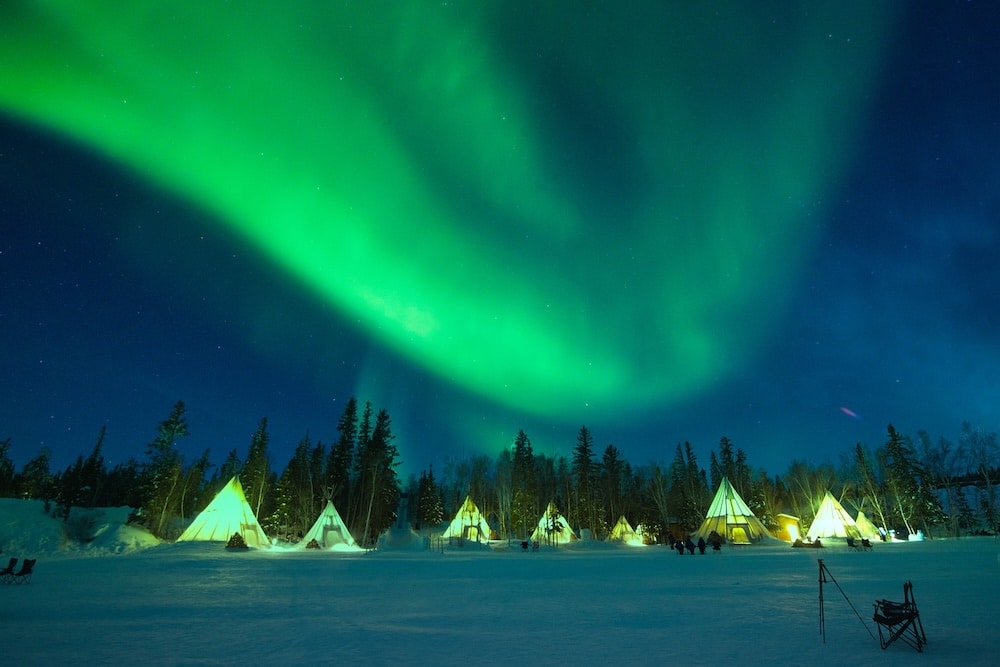
Located along the north shore of Great Slave Lake, Yellowknife is the only city in the Northwest Territories and serves as the state capital. With its international airport, it is easily accessible.
Positioned at a latitude of 62.5 degrees north—about 700 kilometers south of Alta, Norway—Yellowknife benefits from low light pollution, long, clear winter nights, and a well-developed infrastructure for Northern Lights tourism. In addition to light viewing, you can enjoy hiking, dog sledding, and snowmobile trips.
Where to stay: For an exceptional aurora experience, consider Blachford Lake Lodge, a remote, fly-in wilderness retreat just north of Yellowknife. The lodge offers tranquil natural surroundings and zero light pollution, making it ideal for Northern Lights viewing.
16. Alta, Norway: Northern Lights and Arctic Adventures

In Alta, situated on Norway’s far northern coast, the Northern Lights frequently dance across the night sky. This picturesque city offers stunning views of icy fjords and snow-covered mountains. With its own airport, Alta is easily accessible and serves as a gateway for Arctic adventures, including whale watching, reindeer sleigh rides, dog sledding, snowmobiling, and of course, aurora viewing.
The area boasts minimal light pollution and features an aurora observatory above the town, providing an unrivaled vantage point for watching the lights. The Northern Lights Cathedral, a striking silver-spired church, celebrates the aurora in its design.
Where to stay: At Sorrisniva, ice sculptors craft exquisite igloos where you can enjoy a surprisingly cozy night on a reindeer-hide-draped ice bed. The stay here combines the thrill of snow activities and light spotting with unique comfort.
FAQ and Planning Your Aurora Borealis Adventure
Let’s face it—seeing the Northern Lights is all about planning. From choosing the right location to timing your visit, every detail matters when it comes to catching a glimpse of this elusive wonder. Learn how to capture the perfect Northern Lights photograph with tips from photography experts.
What Is the Best Place to See Northern Lights in December?
What Is the Best Place to See Northern Lights in March?
When Is the Best Time to See the Northern Lights?
Can You See the Northern Lights During a Full Moon?
How Do I Choose the Best Location for Seeing the Northern Lights?
Where Can You See the Northern Lights Tonight
Can You See the Northern Lights in the Summer?
What Are the Best Places in North America to See the Northern Lights?
Wrapping it up
Experiencing the Northern Lights is nothing short of magical. This natural spectacle, with its vibrant, shifting colors and ethereal dance across the night sky, transcends ordinary beauty and connects us to the raw, awe-inspiring forces of the universe that we simply cannot explain. Witnessing the Northern Lights is a spellbinding reminder of nature’s power and the delicate balance of our planet. The fleeting, mesmerizing display of lights creates an unforgettable moment of wonder and tranquility, making it a truly extraordinary experience that stays with you long after the lights have faded.
Author: Carla Moore
 Hi, I’m Carla-Mari. A dedicated foodie with a love for nature, I bring a holistic approach to our vegan recipes and nutritional advice, ensuring you’re fuelled for any adventure.
Hi, I’m Carla-Mari. A dedicated foodie with a love for nature, I bring a holistic approach to our vegan recipes and nutritional advice, ensuring you’re fuelled for any adventure.
Interesting fact: I’m an internationally qualified chef.




